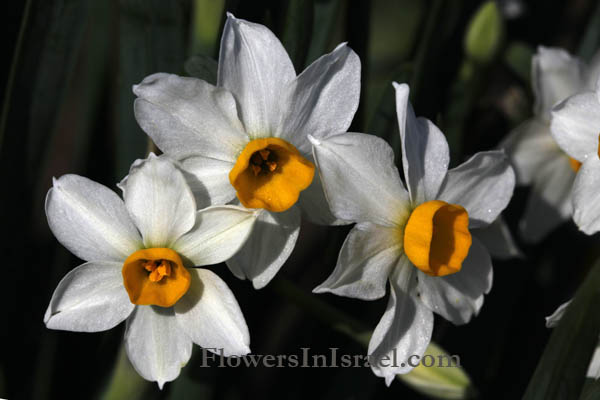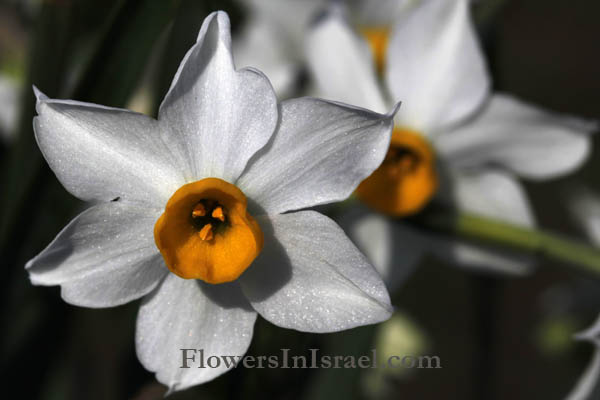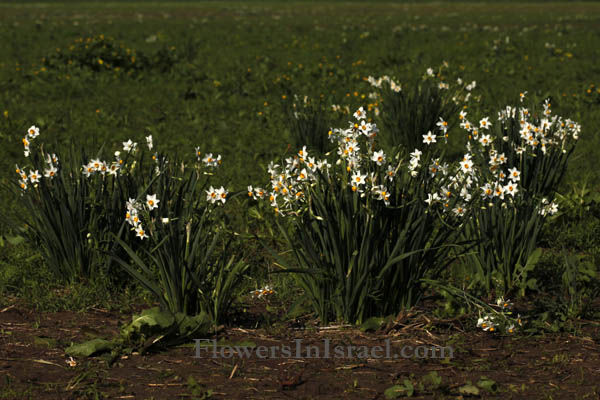Hebrew: נרקיס מצוי, Arabic: نرجس
"I am a rose of Sharon, a lily of the valleys."
Song of Songs 2:1
| Scientific name: | Narcissus tazetta L. | |
| Common name: | Bunchflower daffodil, Polyanthus narcissus | |
| Hebrew name: | נרקיס מצוי | |
| Arabic name: | نرجس | |
| Plant Family: | Amaryllidaceae, נרקיסיים |

|
| Life form: | Geophyte | |
| Stems: | 30-45 cm high | |
| Leaves: | Rosette, entire | |
| Inflorescence | Umbels of 3-15 flowers; spathe 30-50 mm, scarious; pedicels unequal | |
| Flowers: | White, Yellow; hypanthial tube 12-18 mm; perianth-segments usually broadly ovate, white; corona about twice as wide as high, yellow or orange | |
| Fruits / pods: | Loculicidal capsules | |
| Flowering Period: | January, February, October, November, December | |
| Habitat: | Batha, Phrygana, Humid habitats, Hard rock outcrops | |
| Distribution: | Mediterranean Woodlands and Shrublands, Semi-steppe shrublands, Shrub-steppes, Montane vegetation of Mt. Hermon | |
| Chorotype: | Mediterranean | |
| Summer shedding: | Ephemeral |

Derivation of the botanical name: Narcissus, Νάρκισσος, Greek, narkissos, narke "numbness", because of the plant's sedative effect. tazetta, small cup; common name for Narcissus meaning a small cup, from the form of the corona. The common English name for all narcissus is Daffodil. The Hebrew name: נרקיס, narkis, Narcissus; transliteration from the scientific name.
The children of Bazlith were among the Nethinim who returned with Zerubbabel (Nehemiah 7:54, Ezra 2:52). Havatzelet is not a rose; "The rose of Sharon" (Song of Songs 2:1-2) is a mistranslation. The Narcissus tazetta is believed to be the oldest cultivated narcissus, as it was known in ancient Egypt and Greece. Its native is unknown and it is spread throughout the Mediterranean region, as far eastwards as China. It is a bulbous perennial, with broad, strap-shaped, gray-green leaves. The fragrant blooms have white petals and yellow coronas. Multiple blossoms appear on leafless stems. It blooms in late autumn and winter. Bible resources:


|